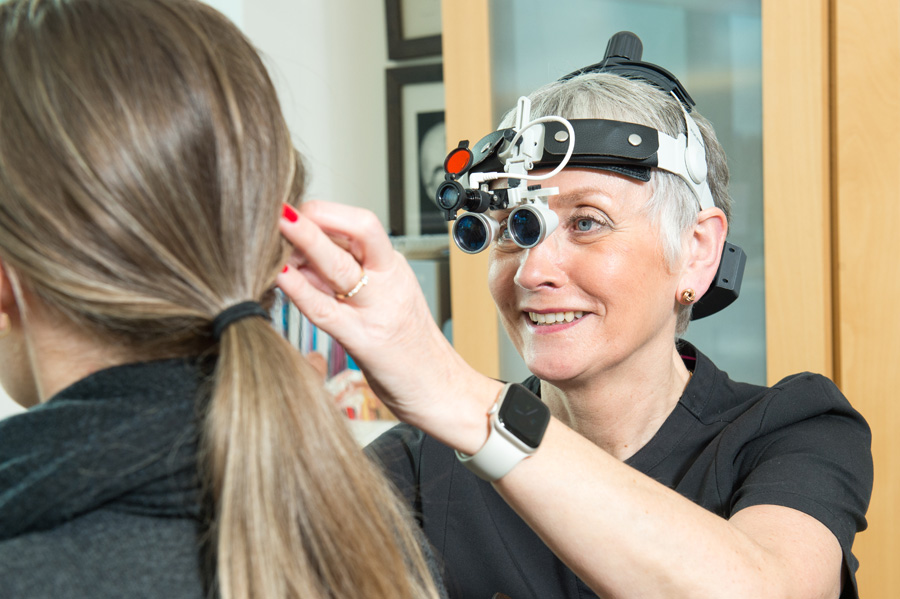Ear wax, also known as cerumen, is a natural substance produced by the glands in the ear canal to protect and lubricate the ears. While it serves an essential function, excessive ear wax buildup can cause discomfort, hearing loss, and even infections. Understanding the best practices for ear wax removal management ensures optimal ear health while preventing potential complications.
In this guide, we will explore effective and safe ways to manage Ear Wax Removal Dubai, including professional and at-home solutions, common mistakes to avoid, and post-care tips for maintaining clear and healthy ears.
Why Ear Wax Builds Up:
Ear wax is naturally expelled from the ears through jaw movements like chewing and talking. However, some factors contribute to excessive buildup, such as:
- Frequent use of earbuds or hearing aids – These can push wax deeper into the ear canal.
- Narrow ear canals – Some individuals naturally produce more wax, leading to blockages.
- Using cotton swabs incorrectly – Instead of removing wax, they often push it further inside.
- Age and genetics – Older adults tend to have drier, harder ear wax, making removal more challenging.
Safe Methods for Ear Wax Removal:
1. Professional Ear Wax Removal:
If ear wax buildup is causing hearing issues or discomfort, seeking professional help is recommended. Experts use specialized techniques such as:
- Microsuction – A gentle vacuum removes wax without the need for liquids.
- Irrigation – Warm water is flushed into the ear canal to dislodge wax.
- Manual removal – Using medical tools like curettes or forceps to extract hardened wax.
2. At-Home Remedies for Ear Wax Removal:
For mild cases, safe home remedies can help manage wax buildup:
Ear Drops and Oils:
Over-the-counter ear drops or natural oils (olive, mineral, or almond oil) soften wax for easy removal. Apply a few drops into the ear, let it sit for a few minutes, and then drain.
Warm Water Rinse:
Using a bulb syringe, gently flush lukewarm water into the ear to dislodge softened wax. Tilt your head to allow excess liquid to drain out.
Steam Therapy:
Taking a warm shower or inhaling steam can loosen ear wax naturally, aiding in its self-expulsion.
Common Mistakes to Avoid:
To prevent complications, avoid these harmful practices:
- Using cotton swabs – These push wax deeper, increasing the risk of impaction.
- Inserting sharp objects – Items like hairpins or toothpicks can damage the eardrum.
- Frequent ear cleaning – Over-cleaning can strip the ears of protective wax, leading to dryness and irritation.
- Ignoring persistent symptoms – If hearing loss, pain, or ringing in the ears persists, consult a professional.
Post-Treatment Ear Care Tips:
After removing excess ear wax, follow these tips to keep your ears healthy:
- Avoid inserting objects into the ears – Let your ears self-clean naturally.
- Use ear protection in dusty or noisy environments – This prevents debris buildup.
- Keep ears dry after showers or swimming – Excess moisture can contribute to wax buildup.
- Limit headphone and earbud use – These can trap wax and block the natural expulsion process
When to Seek Professional Help:
While mild wax buildup can be managed at home, seek medical attention if you experience:
- Sudden or severe hearing loss
- Persistent ear pain or discomfort
- Ear ringing (tinnitus)
- Dizziness or balance issues
Ignoring these signs can lead to complications, including infections or impacted wax that may require professional intervention.
Conclusion:
Managing ear wax properly is essential for maintaining good hearing and overall ear health. Whether opting for professional removal or safe home remedies, the key is to use gentle, effective methods while avoiding common mistakes. If symptoms persist, always seek expert guidance for proper care, Enfield Royal Clinic.









